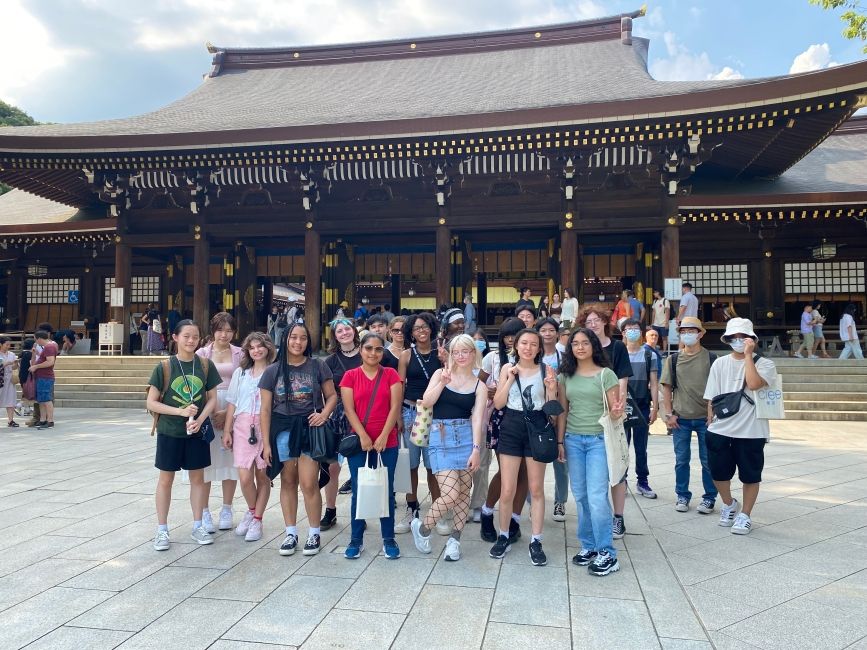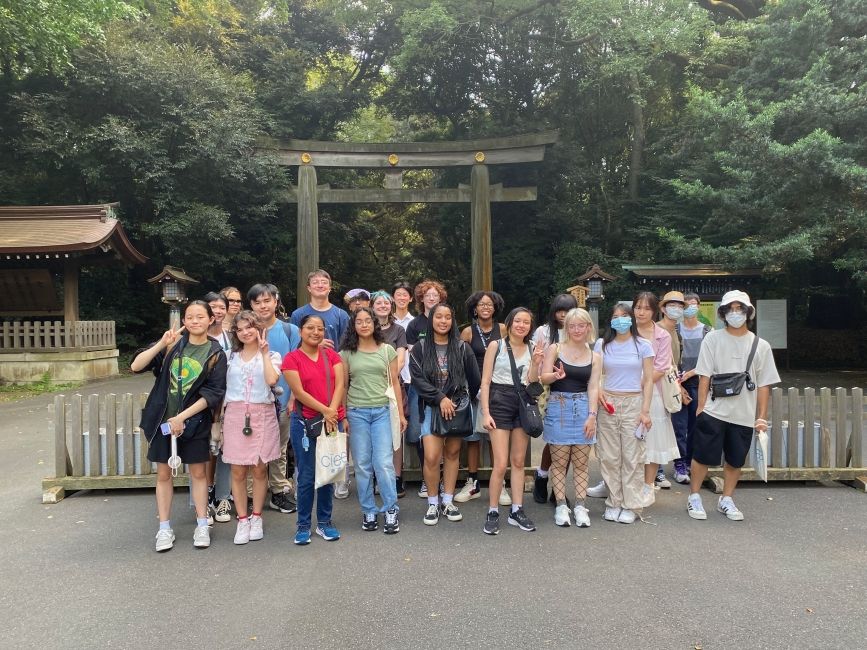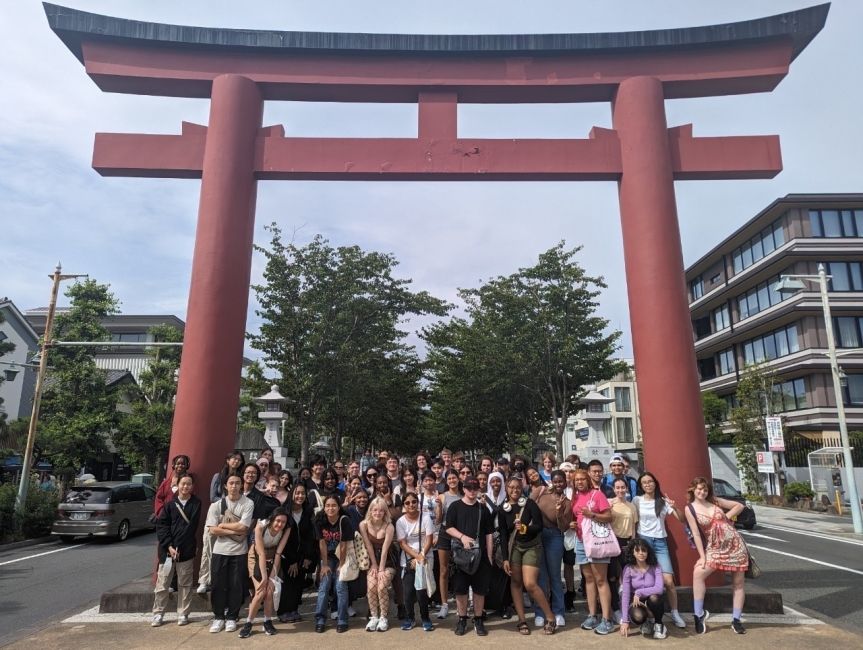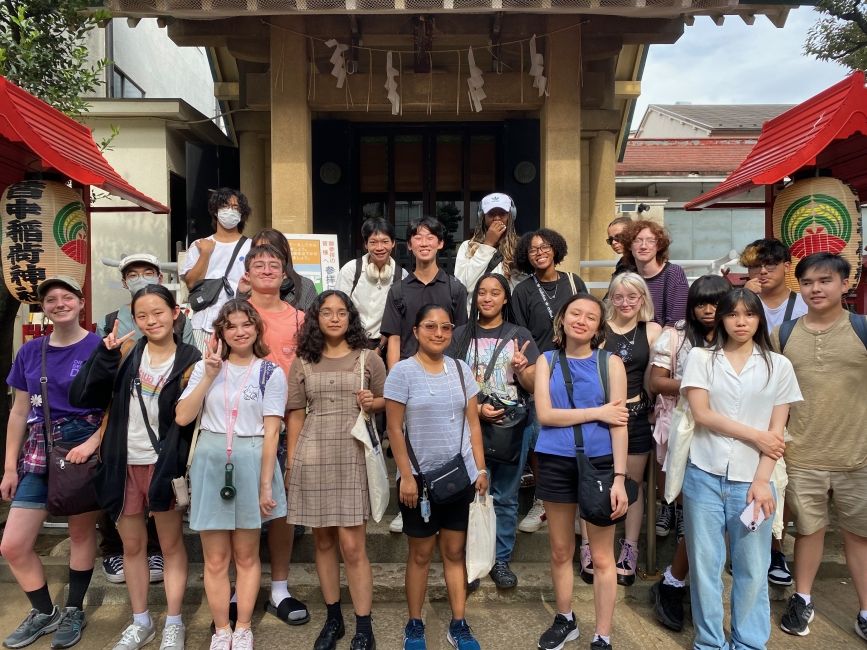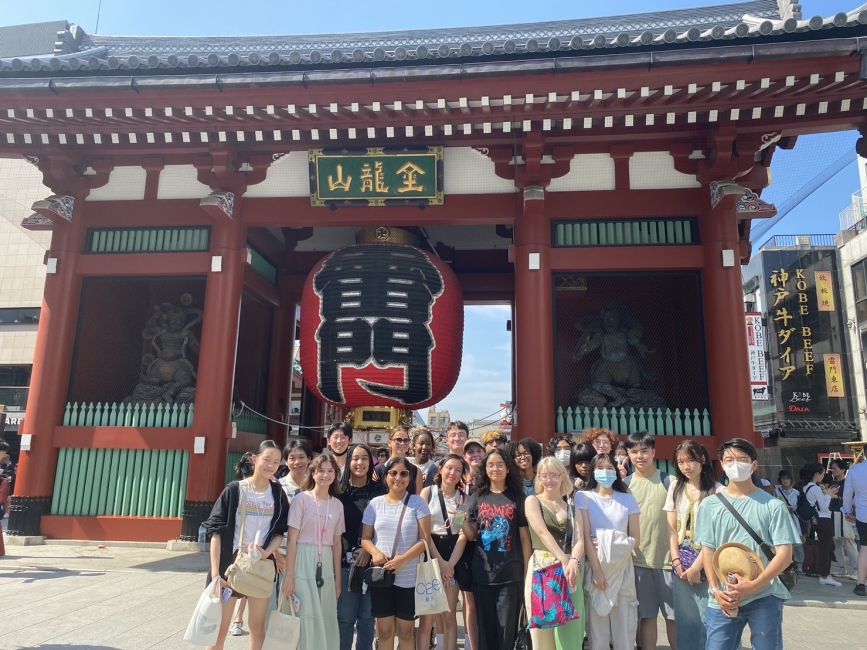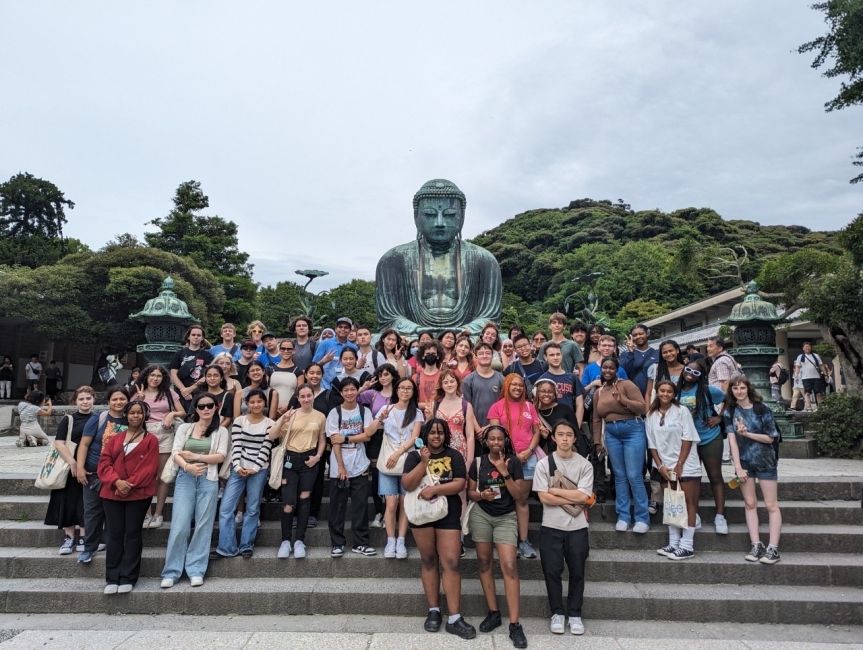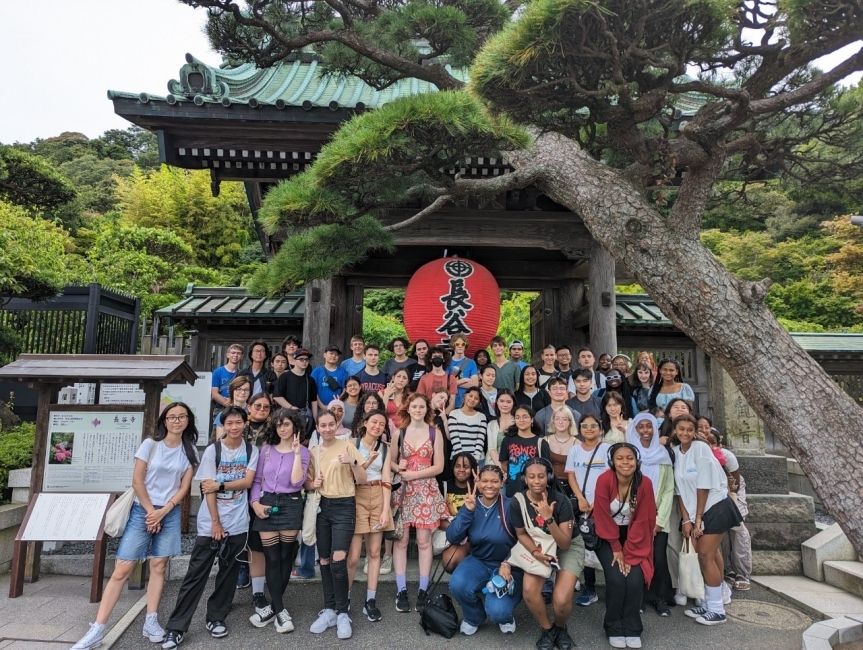Shrines, Temples, and more Shrines, oh my!
One of the most visable aspect of Japanese culture, temples and shrines, gives much insight into Japanese history. From the architecture to each shrine or temple's ritual practices, we are able to see a glimpse of Japan's history. Big and small, old and new, each shrine and temple has a cultural significance to Japan and to the residents who are under the shrine or temple's protection.
The students of CIEE have so far visited three shinto shrines and three buddhist temples!
Meiji Jingu, a shrine dedicated to Emperor Meiji, the emperor who started the Meiji Restoration and introduced industrialization to Japan.
Hachimangu, a shrine built during the Kamakura period, the period when samurai were born, so this shrine was a spiritual center for the people as Hachiman-kami, the guardian deity of Kamakura and of Samurai, resided there.
Kaichu-Inari, a shrine built in the 1500s in Okubo. It was originally protected by soldiers, so it gained the name 'minnataru', meaning everyone hits the target. They thought this would bring them good luck because they could 'hit their target' or 'hit their goals' thorugh praying at this shrine. Shin-okubo, the neighboring town, eventually became Korea Town, and the shrine took on a new purpose. People now come to Kaichu Inari to pray to 'hit their target' when it comes to attaining tickets to their favorite K-pop artists shows.
Sensouji, Tokyo's oldest temple, built in 645 A.D. for the purpose of honoring the goddess Kannon. It has a market inside the gates that has a lot of Japanese street food as well as souvenirs.
Kotokuin, home to the Daibutsu (Big Buddha). This Buddha is famous because it is not enclosed in a temple like most other Buddha statues. It was originally housed in a temple, but the temple was destroyed, and only the Daibutsu survived. The Daibutsu is a Japanese National Treasure, and many people come from all over the world to see it.
Hasedera, a temple dedicated to Kannon, is one of the most picturesque spots in Kamakura
Related Posts

How I Made $2,000 Referring Other Students on Summer Abroad Programs
Read this blog from one of our past Global Ambassadors and find out how she was able to earn rewards with CIEE and encourage other students to study abroad!
Host Family Weekend
On the final weekend in Japan, students spent time with their host family. This weekend, host families prepared activities for students. Some students learned how to make Japanese food from... keep reading
Discovering Aizome- Japanese Indigo Dyeing
Tokyo Language and Culture students experienced a lesson in traditional Japanese indigo dyeing at Some no Sato, a dyeing shop that was established over 100 years ago in Ochiai, Shinjuku... keep reading
